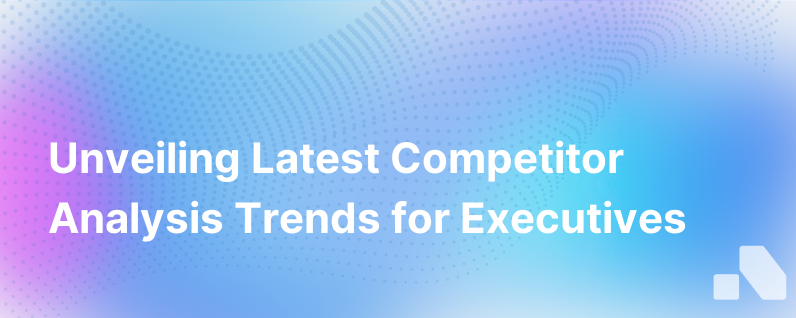
Navigating the ever-evolving marketplace requires a deep understanding of your competitors. This understanding doesn't just mean knowing their products and offerings but having an insight into their strategies, strengths, weaknesses, and predicted moves. This is where Competitor Analysis comes into play.
A key factor for a successful business strategy, competitor analysis helps you identify potential threats and opportunities in your market, determine industry trends, and adapt to shifts before your competitors do. Here, we dive deep into the primary trends dominating the competitor analysis landscape in the B2B sales arena.
Rise of Real-Time Competitor Analysis
The ability to analyze competitors in real-time is one of the strongest emerging trends. Companies in the B2B realm need dynamic, up-to-the-moment competitor analysis to make swift decisions and alterations to their strategies.
With broader access to data points from social media, website traffic, and digital footprints, it's now possible to track competitor activities with more immediacy. Advanced tools using AI and machine learning can alert businesses to new product launches, branding changes, or strategic shifts in real time, empowering immediate responses.
Data-Driven Decision Making
Along with real-time competitor analysis, the emphasis on data-driven decision making is on the rise, facilitated by advances in AI. Today's businesses are leveraging sophisticated research and data analytics tools that sift through large volumes of data to generate insights.
For instance, AI tools can process unstructured data and leverage predictive analytics to uncover hidden patterns and trends that would be missed by traditional methods. Consequently, this enables businesses to anticipate competitor moves and devise strategic responses.
Rise of Social Listening
Social media has transformed the way businesses approach competitor analysis. Through social listening, companies can monitor competitors' activities, gage public sentiment towards them and evaluate their campaign strategies. Tools are available to analyze public reactions and interactions with competitor announcements and activities, providing a fresh perspective to the competitor landscape.
Emphasis on Ethical Competitor Analysis Tactics
The digitization of competitor analysis has dramatically increased access to competitor data. It’s a double-edged sword—making ethical considerations more critical than ever. Businesses are becoming cautious to avoid illegal and unethical activities like cyber intrusion, breach of proprietary databases or violation of privacy laws.
Companies are prioritizing legal and ethical data collection and analysis methods. Their primary focus is publicly available data or information shared willingly by competitors: product pricing from websites, customer reviews, hiring postings, company blogs and public reports, among others.
Adoption of AI-Powered Tools
Artificial Intelligence has infiltrated every facet of business operations, competitor analysis being no exception. At the click of a button, AI-powered tools can track price fluctuations, monitor product launches, analyze consumer sentiment and much more. These tools are increasingly used for their efficiency, accuracy, and round-the-clock functionality.
Platforms like Aomni not just provide intelligence in real-time but also offer personalized sales content for businesses to make the most out of the information in a time-efficient manner.
Network Analysis
Apart from analyzing the competitive landscape directly, a rising trend is to study the multiple networks surrounding competitors. This could include tracking their partnerships, associations, supply chain vendors, or even customers.
Understanding these networks offers a deeper insight into the competitive strategy, allowing businesses to make informed decisions about potential partnerships, channels to tap into, or clients to target.
Conclusion
The dynamics and trends of competitor analysis keeps changing, reflection of the transformative business landscape. Real-time analysis, emphasis on ethical tactics, use of AI-powered tools and data-driven strategies highlight current trends.
Competitor analysis is no longer a one-off exercise, but an ongoing endeavour to maintain competitiveness and to stay ahead of the curve in the volatile business environment. As these trends indicate, the future of competitor analysis will involve even more innovation, data-orientation, and the intelligent use of tech tools like Aomni for actionable insights.